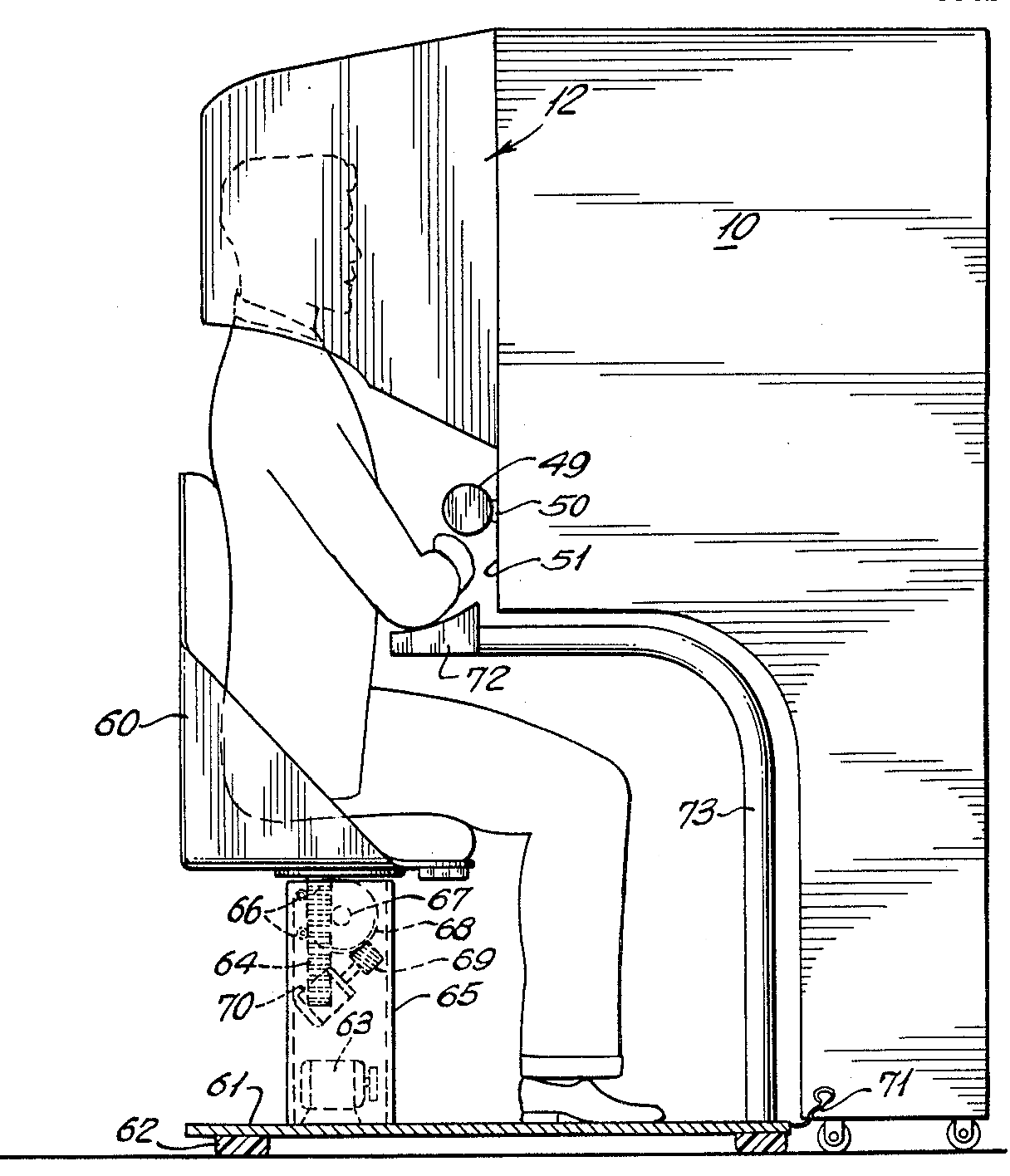Sensorama on:
[Wikipedia]
[Google]
[Amazon]
 The Sensorama was a machine that is one of the earliest known examples of immersive, multi-sensory (now known as multimodal) technology. This technology, which was introduced in 1962 by
The Sensorama was a machine that is one of the earliest known examples of immersive, multi-sensory (now known as multimodal) technology. This technology, which was introduced in 1962 by
US Patent #3,050,870
* Rheingold, H. (1991). ''Virtual Reality'', Simon & Schuster, New York, N.Y. * Robinett, W. (1994). "Interactivity and Individual Viewpoint in Shared
medienkunstnetz.de article
Products introduced in 1962 Multimodal interaction Virtual reality {{tech-stub
 The Sensorama was a machine that is one of the earliest known examples of immersive, multi-sensory (now known as multimodal) technology. This technology, which was introduced in 1962 by
The Sensorama was a machine that is one of the earliest known examples of immersive, multi-sensory (now known as multimodal) technology. This technology, which was introduced in 1962 by Morton Heilig Morton Leonard Heilig (December 22, 1926 – May 14, 1997) was an American pioneer in virtual reality (VR) technology and a filmmaker. He applied his cinematographer experience and with the help of his partner developed the Sensorama over several ye ...
, is considered one of the earliest virtual reality
Virtual reality (VR) is a simulated experience that employs pose tracking and 3D near-eye displays to give the user an immersive feel of a virtual world. Applications of virtual reality include entertainment (particularly video games), educ ...
(VR) systems.
Development
Heilig, who today would be thought of as a "multimedia" specialist, in the 1950s saw theater as an activity that could encompass all the senses in an effective manner, thus drawing the viewer into the onscreen activity. He dubbed it "Experience Theater", and detailed his vision of multi-sensory theater in a 1955 paper, "The Cinema of the Future" (Robinett 1994). In 1962 he built a prototype of his vision, dubbed the Sensorama, along with five short films for it to display. The Sensorama was amechanical
Mechanical may refer to:
Machine
* Machine (mechanical), a system of mechanisms that shape the actuator input to achieve a specific application of output forces and movement
* Mechanical calculator, a device used to perform the basic operations of ...
device, which includes a stereoscopic color display, fans, odor emitters, stereo‐sound system, and a motional chair. It simulated a motorcycle ride through New York and created the experience by having the spectator sit in an imaginary motorcycle while experiencing the street through the screen, fan-generated wind, and the simulated noise and smell of the city. These elements are triggered at the appropriate time such as the case of the release of the exhaust chemicals when rider approached a bus. The petrol fumes and the smell of pizza snack bars were recreated by chemicals. While the machine still functions today, audiences cannot interact with it and it cannot respond based on the user's actions.
Howard Rheingold
Howard Rheingold (born 1947) is an American critic, writer, and teacher, known for his specialties on the cultural, social and political implications of modern communication media such as the Internet, mobile telephony and virtual communities (a ...
(in his 1991 book ''Virtual Reality'') spoke of his trial of the Sensorama using a short film piece that detailed a bicycle ride through Brooklyn, created in the 1950s, and still seemed quite impressed by what it could do more than 40 years later. The Sensorama was able to display stereoscopic
Stereoscopy (also called stereoscopics, or stereo imaging) is a technique for creating or enhancing the depth perception, illusion of depth in an image by means of stereopsis for binocular vision. The word ''stereoscopy'' derives . Any stere ...
3-D images in a wide-angle view, provide body tilting, supply stereo sound, and also had tracks for wind and aroma
An odor (American English) or odour ( Commonwealth English; see spelling differences) is caused by one or more volatilized chemical compounds that are generally found in low concentrations that humans and animals can perceive via their se ...
s to be triggered during the film. Heilig was unable to obtain financial backing for his visions and patent
A patent is a type of intellectual property that gives its owner the legal right to exclude others from making, using, or selling an invention for a limited period of time in exchange for publishing an enabling disclosure of the invention."A p ...
s, and so the Sensorama work was halted.
See also
*''The Sensorium
''The Sensorium'' is regarded the world's first commercial 4D film and was first screened in a Six Flags theme park in Baltimore in 1984. It was produced in partnership with Landmark Entertainment.
Description
The 4D film included multiple track ...
'', the world's first commercial " 4D film"
References
* Heilig M. (1962)US Patent #3,050,870
* Rheingold, H. (1991). ''Virtual Reality'', Simon & Schuster, New York, N.Y. * Robinett, W. (1994). "Interactivity and Individual Viewpoint in Shared
Virtual World
A virtual world (also called a virtual space) is a computer-simulated environment which may be populated by many users who can create a personal avatar, and simultaneously and independently explore the virtual world, participate in its activities ...
s: The Big Screen vs. Networked Personal Displays." ''Computer Graphics'', 28 (2), 127.
;Specific
External links
medienkunstnetz.de article
Products introduced in 1962 Multimodal interaction Virtual reality {{tech-stub